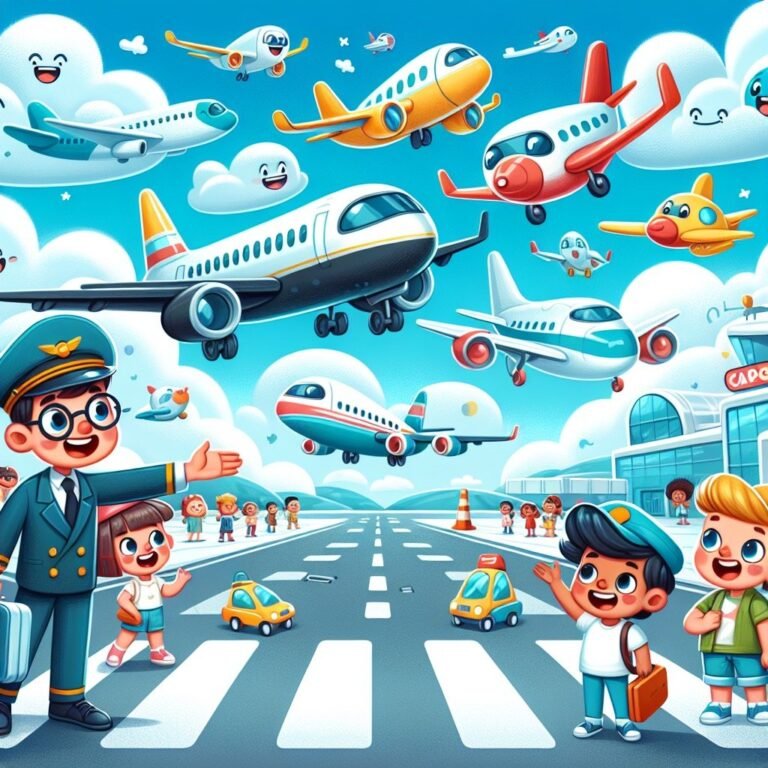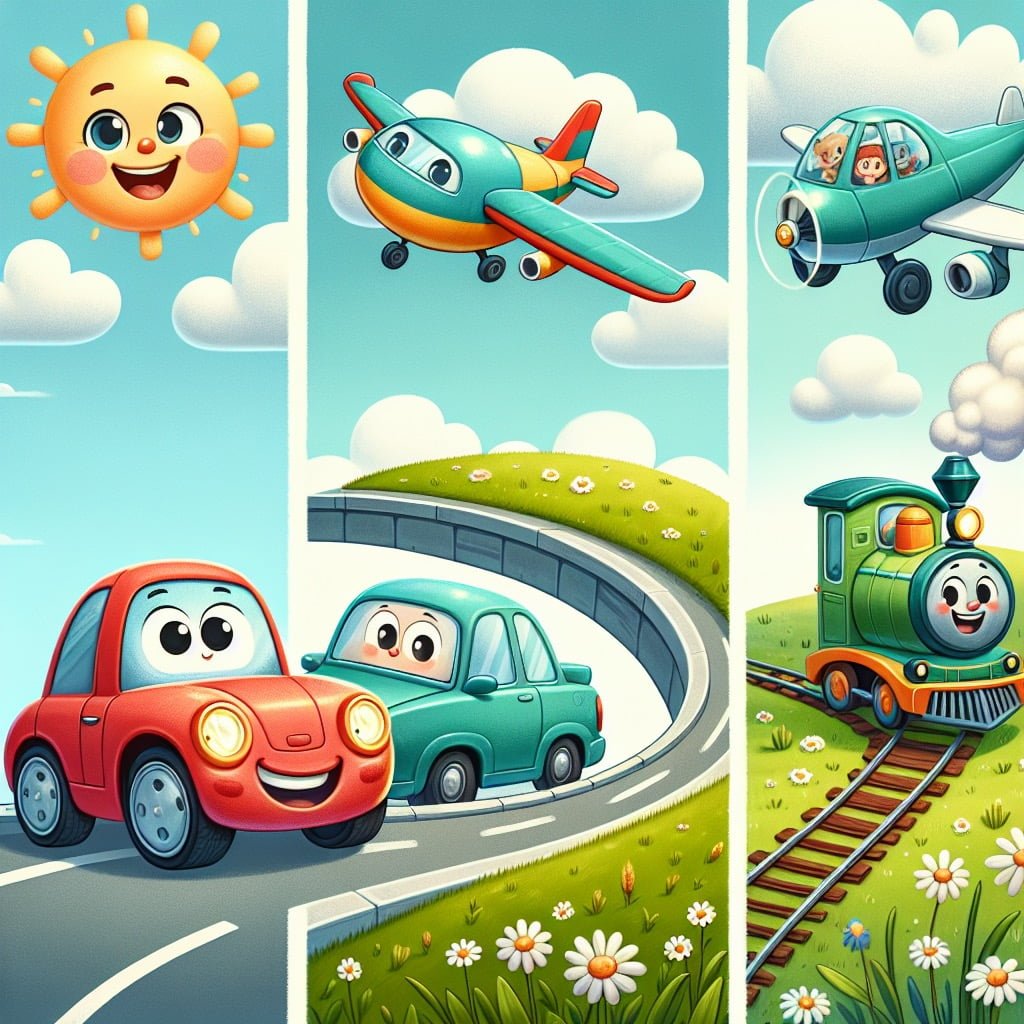Welcome to a fascinating journey through the captivating world of Airplane Facts For Kids! As an expert in aviation and a skilled writer of popular science blogs, I am thrilled to share with you an array of fun and intriguing facts about planes that will spark curiosity and ignite passion in young minds. From the incredible ability of planes to fly backwards to the impressive wingspan of jumbo jets, each fact is designed to captivate and educate children of all ages. Join me on this exciting adventure as we explore the wonders of flight and uncover the marvels of modern aviation technology. So buckle up, prepare for takeoff, and get ready to soar through the skies with these amazing Airplane Facts For Kids!
Airplane Facts For Kids
1. Planes can Fly Backwards
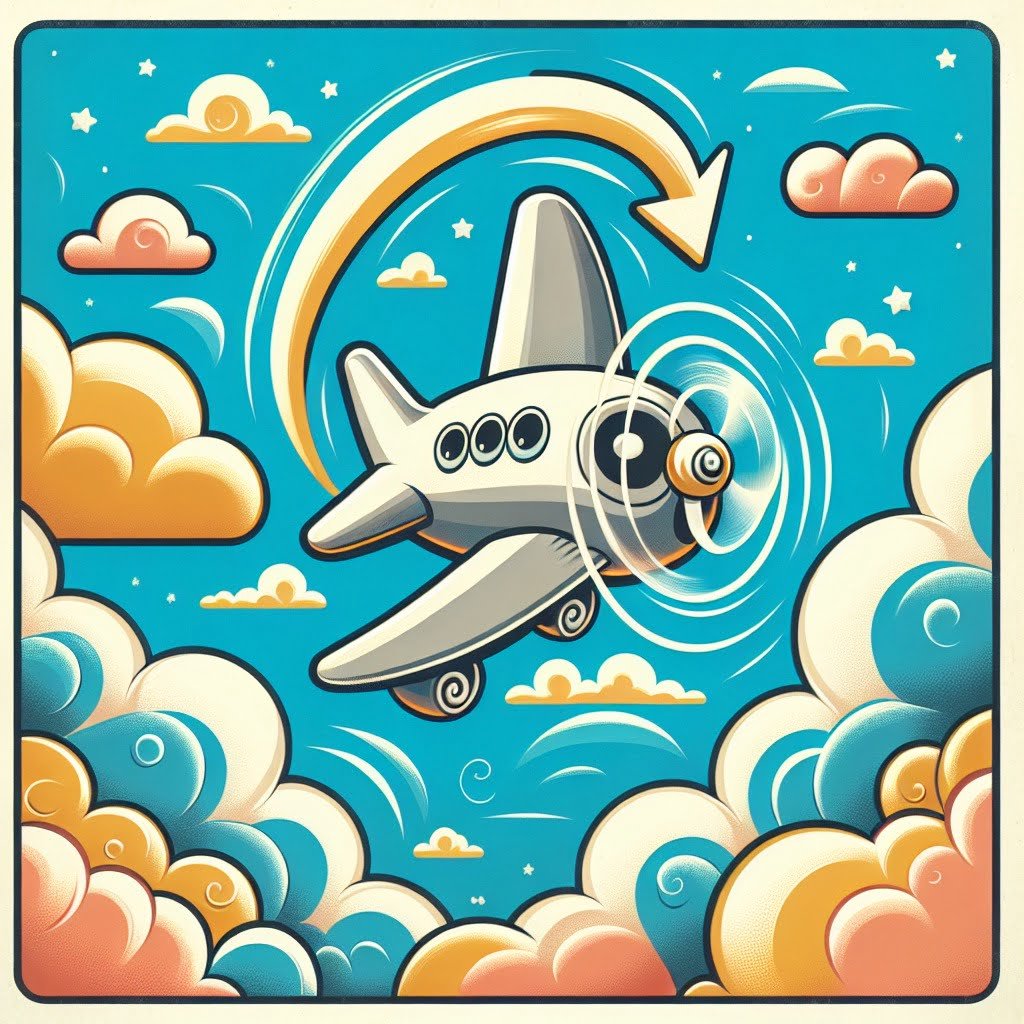
For younger kids: Some planes can actually fly in reverse like a car!
For older kids: Some specially designed planes, like the Harrier Jump Jet, have the ability to hover and fly backwards due to their unique engine positioning and advanced technology.
Detailed explanation:One fascinating fact about airplanes is that they have the ability to fly backwards under certain circumstances. This may seem counterintuitive to some, as we typically think of airplanes as machines that move forward through the air. However, with the right design and engineering, planes can in fact fly in reverse.
One way in which airplanes can fly backwards is through the use of powerful jet engines that can be angled to provide thrust in the opposite direction. This is known as thrust reversal, and it allows planes to slow down and even move backwards on the runway after landing. This feature is particularly useful for helping aircraft maneuver in tight spaces or on crowded airport tarmacs.
Another way in which airplanes can achieve backward flight is through the use of a unique wing design called a canard. Canard wings are positioned at the front of the aircraft, ahead of the main wings, and can be angled to create reverse lift. This allows the plane to fly in reverse or even hover in place, similar to a helicopter.
In conclusion, while it may not be a common sight, airplanes do have the capability to fly backwards thanks to innovative engineering and design features. These unique abilities add to the versatility and maneuverability of aircraft, making them truly remarkable machines in the world of aviation.
For more interesting Airplane Facts For Kids, be sure to check out our other blog posts on the topic.
Airplane Facts For Kids
2. Planes Can Travel Faster Than the Speed of Sound

For younger kids: Some planes are so fast they can break the sound barrier!
For older kids: Certain fighter jets and specialized aircraft are capable of surpassing the speed of sound, creating a sonic boom as they break through the sound barrier.
Detailed explanation:One fascinating aspect of airplanes is their ability to travel faster than the speed of sound. When an airplane exceeds the speed of sound, it is said to be traveling at supersonic speed. This means that the airplane is moving faster than the sound waves it is emitting, causing a sonic boom to be heard as it passes by.
One of the key factors that allows airplanes to reach supersonic speeds is their aerodynamic design. Aircraft manufacturers carefully design the shape of the airplane to reduce drag and increase lift, allowing the plane to move more efficiently through the air. In addition, powerful engines are needed to provide the thrust necessary to reach and sustain supersonic speeds.
One of the most famous supersonic airplanes is the Concorde, which was a commercial airliner capable of flying at twice the speed of sound. The Concorde could travel from New York to London in just over three hours, cutting the typical flight time in half. However, the Concorde was eventually retired due to high operating costs and concerns over its fuel efficiency.
Today, there are military aircraft such as the Lockheed Martin F-22 Raptor and the Russian Sukhoi Su-57 that are capable of flying at supersonic speeds. These aircraft are designed for combat situations and have advanced technology to allow them to travel faster than the speed of sound while remaining stable and maneuverable.
In conclusion, the ability of airplanes to travel faster than the speed of sound is a testament to the incredible engineering and design that goes into these machines. From commercial airliners to military aircraft, the ability to reach supersonic speeds opens up a whole new realm of possibilities for travel and defense.
Airplane Facts For Kids
3. The First Powered Flight Lasted Just 12 Seconds
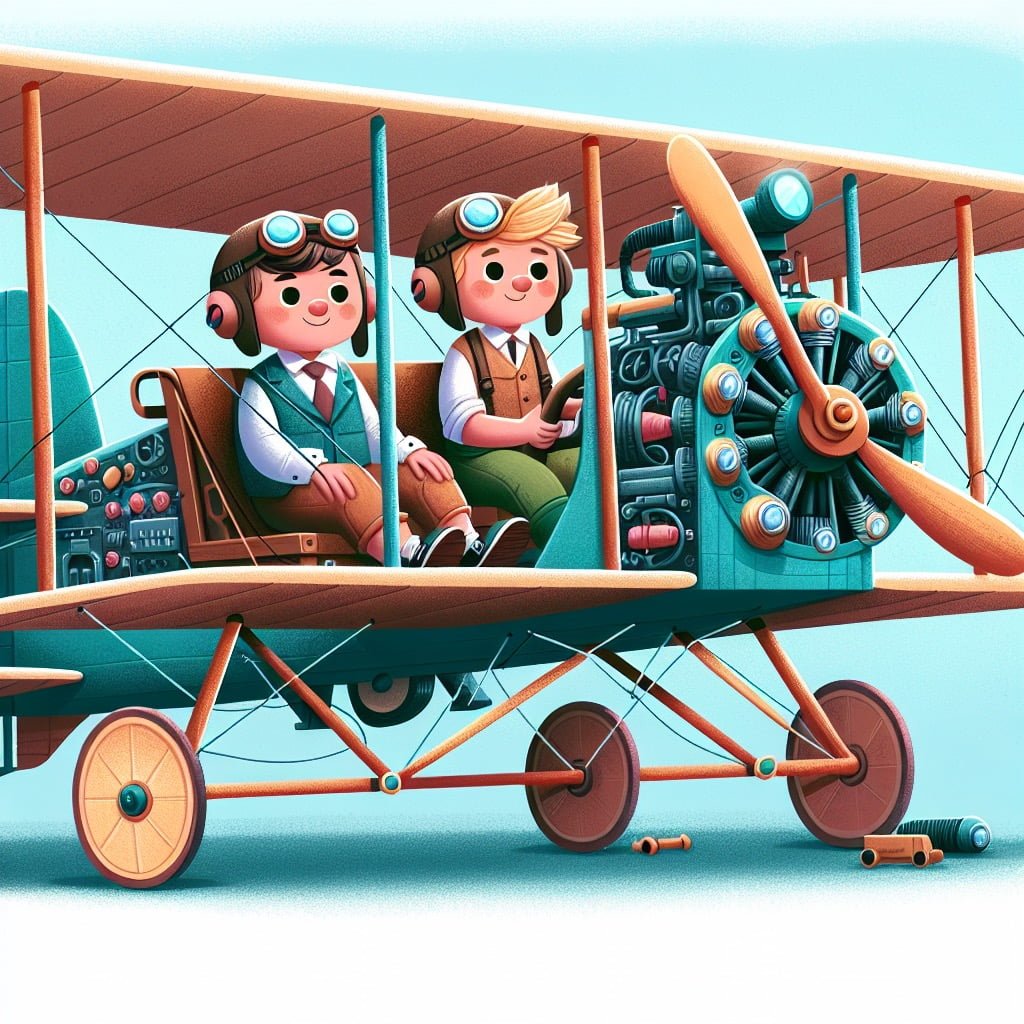
For younger kids: The first plane only flew for a very short time, like jumping in a pool!
For older kids: The Wright brothers achieved the first powered flight in history on December 17, 1903, with their aircraft, the Wright Flyer, staying airborne for a mere 12 seconds but paving the way for modern aviation.
Detailed explanation:One of the most iconic moments in aviation history is the first powered flight by the Wright brothers on December 17, 1903. This groundbreaking event took place in Kitty Hawk, North Carolina, where Orville Wright piloted the Wright Flyer, an aircraft designed and built by Orville and his brother Wilbur. The flight lasted just 12 seconds, but it was enough to change the course of history.
The Wright brothers had been experimenting with gliders for years, perfecting their design and understanding the principles of flight. Their ultimate goal was to create a powered aircraft that could sustain controlled and sustained flight. On that fateful day in Kitty Hawk, their hard work paid off.
The Wright Flyer took off from a launching rail and soared into the air, with Orville at the controls. The aircraft only traveled 120 feet, but it was a monumental achievement. The Flyer was the first powered, heavier-than-air machine to achieve sustained flight. This moment marked the birth of modern aviation and opened up a whole new world of possibilities.
Despite the short duration of the flight, the impact of the Wright brothers’ achievement cannot be overstated. Their dedication to innovation and relentless pursuit of their dream paved the way for the development of the modern airplane. Today, millions of flights take off and land all over the world, thanks to the vision and determination of Orville and Wilbur Wright.
In conclusion, the first powered flight lasting just 12 seconds may seem brief, but its significance is immeasurable. It laid the foundation for the vast aviation industry we know today, and continues to inspire generations of aspiring aviators.
Airplane Facts For Kids
4. Planes Use Over 1,000 Gallons of Fuel Per Hour
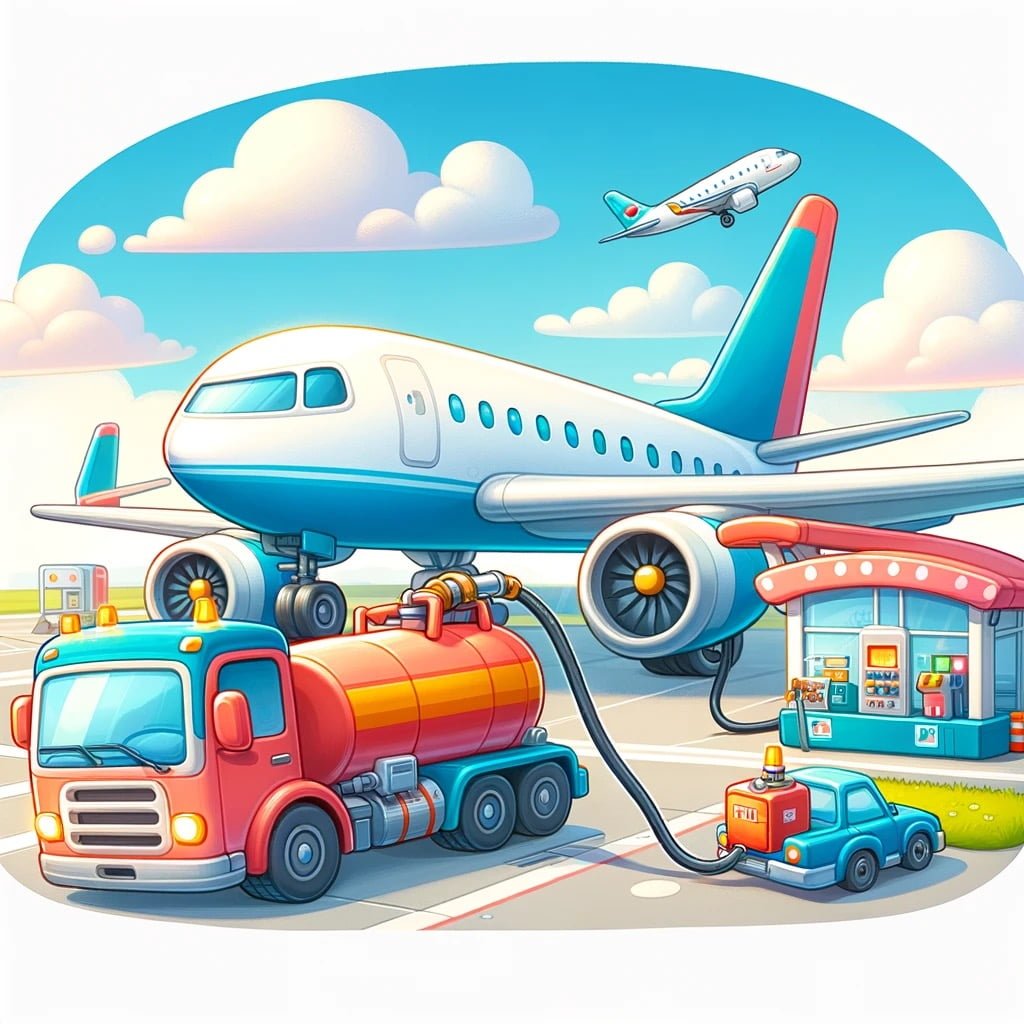
For younger kids: Planes need a lot of gas to fly like a really big car!
For older kids: Commercial jets can consume more than 1,000 gallons of fuel per hour, highlighting the immense power and energy required for air travel.
Detailed explanation:Airplane Facts For Kids
Planes are incredible machines that allow us to travel long distances in a relatively short amount of time. However, the amount of fuel that these aircraft consume can be quite staggering. On average, planes use over 1,000 gallons of fuel per hour of flight. This may seem like a large amount, but it is necessary in order to keep the plane in the air and ensure a safe journey for all passengers on board.
There are several factors that contribute to the high fuel consumption of airplanes. One of the main reasons is the sheer size and weight of the aircraft. In order to lift off the ground and stay airborne, planes need to generate a significant amount of thrust, which requires a large amount of fuel. Additionally, the engines of an airplane are designed to be powerful and efficient, but this also means that they consume a significant amount of fuel.
Another factor that affects the fuel consumption of planes is the cruising altitude at which they fly. Commercial airplanes typically cruise at altitudes of around 30,000 to 40,000 feet. At these high altitudes, the air is thinner, which means that the engines need to work harder to maintain the necessary thrust. This increased workload results in higher fuel consumption.
Despite the high fuel consumption of airplanes, the aviation industry is constantly working to develop more fuel-efficient aircraft. New technologies such as composite materials, advanced engine designs, and improved aerodynamics are being implemented to reduce fuel consumption and minimize the environmental impact of air travel.
In conclusion, while it may be surprising to learn that planes use over 1,000 gallons of fuel per hour, it is important to consider the many factors that contribute to this high fuel consumption. By understanding these factors and continuing to develop more efficient aircraft, we can work towards a more sustainable future for air travel.
Airplane Facts For Kids
5. The Airbus A380 is the World’s Largest Passenger Plane

For younger kids: The Airbus A380 is like a giant flying hotel with lots of seats!
For older kids: The A380 is a double-decker plane with the capacity to accommodate over 800 passengers, making it the largest commercial aircraft in the world.
Detailed explanation:The Airbus A380 holds the title of being the world’s largest passenger plane, and it is truly a marvel of modern engineering. With a wingspan of over 260 feet and the capacity to carry up to 850 passengers, this double-decker airplane is a giant in the sky. The A380 was designed to meet the growing demand for air travel and to provide a more spacious and comfortable flying experience for passengers.
One of the most striking features of the Airbus A380 is its sheer size. The aircraft is so large that it requires special gates and runways to accommodate its size. In fact, some airports had to make significant upgrades to their infrastructure in order to handle the A380. From the outside, the A380 is an impressive sight, with its four engines and distinctive curved wings.
But the size of the A380 is not just for show – it also allows for a smoother and more comfortable ride for passengers. The additional space on board means that there is more room for amenities such as spacious seating areas, larger bathrooms, and even onboard lounges and bars. This makes the A380 a popular choice for long-haul flights, where passengers may be spending several hours in the air.
In addition to its size and comfort, the Airbus A380 is also an environmentally friendly choice for air travel. Despite its massive size, the A380 is actually more fuel-efficient per passenger than many smaller airplanes. This is due in part to its advanced aerodynamics and efficient engines, which help reduce fuel consumption and emissions.
In conclusion, the Airbus A380 is truly a remarkable feat of engineering and a testament to human innovation. Its large size, comfort, and efficiency make it a popular choice for passengers and airlines alike. So next time you see the A380 soaring through the sky, remember these fascinating Airplane Facts For Kids and marvel at the technology that allows such a giant to stay aloft.
Airplane Facts For Kids
6. Planes Can Fly at Altitudes of Up to 40,000 Feet
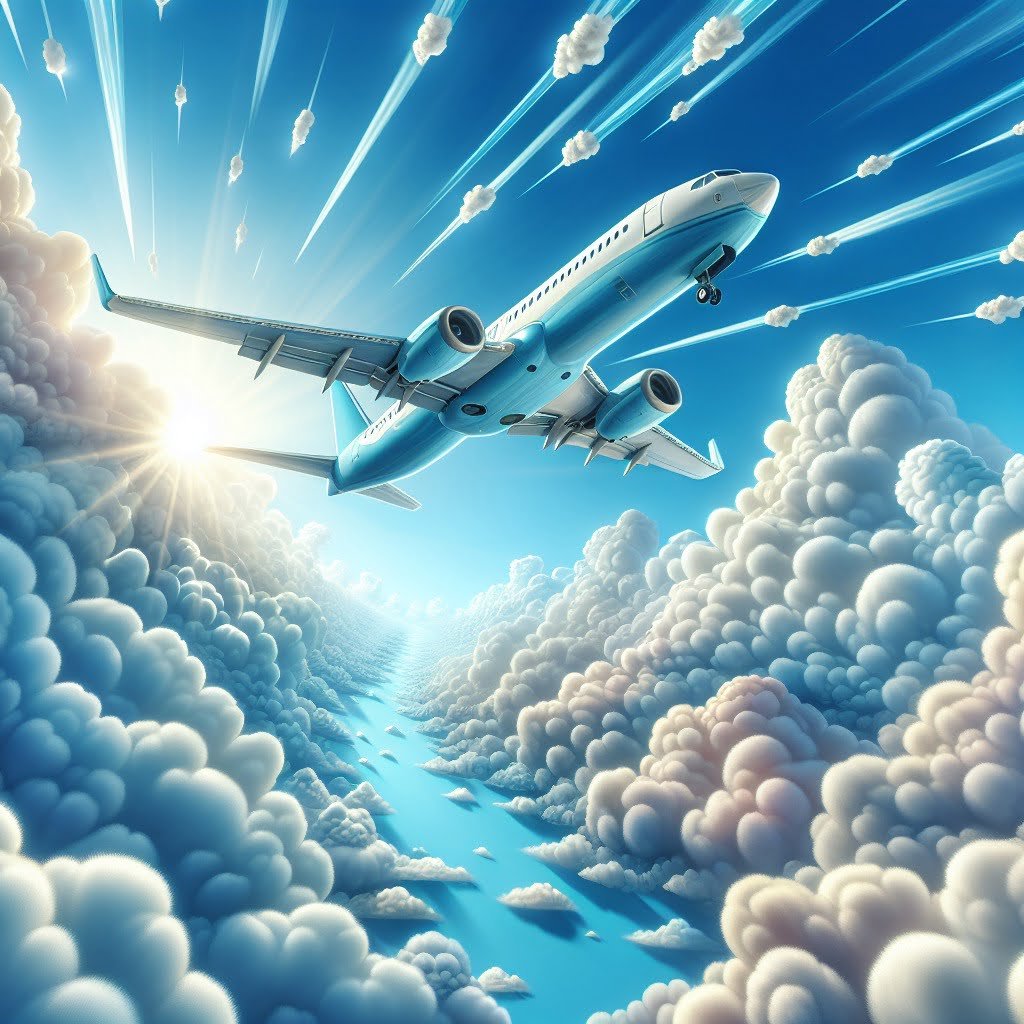
For younger kids: Some planes can fly higher than the tallest mountains!
For older kids: Aircraft such as passenger jets and military planes are capable of reaching altitudes of around 40,000 feet, enabling them to travel above most weather systems and disturbances.
Detailed explanation:Airplane Facts For Kids are always fascinating, especially when it comes to the incredible altitudes at which planes can fly. One of the most impressive Airplane Facts For Kids is that planes have the capability to soar to altitudes of up to 40,000 feet.
At such high altitudes, Airplane Facts For Kids may wonder how planes are able to stay in the air. The key lies in the design of the aircraft and the principles of aerodynamics. Airplane wings are specially shaped to create lift, which counters the force of gravity and keeps the plane airborne. As the plane moves forward, the air flowing over the wings creates a pressure difference, with lower pressure on top and higher pressure on the bottom. This pressure differential generates lift, allowing the plane to climb higher and higher into the sky.
Altitudes of up to 40,000 feet are typically reached during long-haul flights, such as transcontinental or international trips. At these high altitudes, Airplane Facts For Kids should know that the air is much thinner, with lower oxygen levels. To ensure the comfort and safety of passengers and crew, modern airplanes are equipped with pressurization systems that regulate the cabin pressure to a level equivalent to that found at lower altitudes. This prevents altitude sickness and ensures a comfortable flying experience for everyone on board.
In conclusion, the ability of planes to fly at altitudes of up to 40,000 feet is a remarkable feat of engineering and design. Understanding the principles of aerodynamics and the technology behind pressurization systems helps explain how airplanes are able to reach such impressive heights. Airplane Facts For Kids can truly appreciate the incredible capabilities of these flying machines.
Airplane Facts For Kids
7. The Concorde Supersonic Jet Could Fly from New York to London in 3 Hours

For younger kids: The Concorde could fly really, really fast and get to London super quick!
For older kids: The Concorde was a supersonic passenger jet that travelled at speeds of over twice the speed of sound, allowing it to make transatlantic flights in just a few hours.
Detailed explanation:The Concorde supersonic jet was an incredible feat of aviation technology that allowed for unprecedented speed in air travel. With a maximum speed of over twice the speed of sound, the Concorde could fly from New York to London in just 3 hours, compared to the average commercial flight time of around 7-8 hours. This was possible due to the Concorde’s ability to fly at supersonic speeds, cruising at an impressive Mach 2.04.
One of the unique features of the Concorde was its delta-wing design, which allowed for efficient supersonic flight. The engines of the Concorde were also specially designed to withstand the extreme temperatures and pressures experienced during supersonic flight. Additionally, the Concorde had a unique droop nose design that would lower during takeoff and landing to improve visibility for the pilots.
The Concorde was a symbol of luxury air travel, offering passengers a unique and unforgettable experience. However, despite its speed and prestige, the Concorde was eventually retired in 2003 due to a combination of factors, including high operating costs, decreased demand, and safety concerns following a tragic crash in 2000.
Overall, the Concorde remains a fascinating piece of aviation history and a testament to human ingenuity in the realm of air travel. For kids interested in airplanes, the Concorde serves as a reminder of the incredible advancements that have been made in aviation technology over the years. Its ability to drastically reduce travel time between major cities like New York and London is a testament to the potential of supersonic air travel.
Airplane Facts For Kids
8. A Jumbo Jet’s Wingspan Can Exceed 200 Feet

For younger kids: Jumbo jets have really long wings that help them fly!
For older kids: The wingspan of a typical jumbo jet, such as the Boeing 747, can extend over 200 feet, providing the necessary lift and stability for these massive aircraft.
Detailed explanation:Airplane Facts For Kids are always fascinating, especially when it comes to the impressive size of a jumbo jet’s wingspan. These massive aircraft have wingspans that can exceed 200 feet, making them essential for their ability to lift off the ground and stay airborne during flight.
The wings of an airplane are carefully designed to generate lift, which is the force that keeps the aircraft up in the air. A jumbo jet’s wingspan is crucial in this process, as it determines the amount of lift that can be produced. The larger the wingspan, the more lift can be generated, allowing the airplane to carry heavy payloads, including passengers and cargo, over long distances.
In addition to providing lift, a jumbo jet’s wingspan also plays a role in stability and control during flight. The wide wingspan helps to distribute the weight of the aircraft evenly, reducing the chances of it tipping or rolling in the air. The wings also house various control surfaces, such as flaps and ailerons, which help the pilot maneuver the aircraft.
Overall, the size of a jumbo jet’s wingspan is a key factor in its performance and capabilities. It allows the airplane to achieve the necessary lift for takeoff, stay stable and controlled in the air, and safely land at its destination. Airplane Facts For Kids can help them appreciate the engineering marvel that is a jumbo jet’s wingspan.
Airplane Facts For Kids
9. The Red Baron was a Famous World War I Pilot

For younger kids: The Red Baron was a brave pilot who flew a red plane during a big war!
For older kids: Manfred von Richthofen, also known as the Red Baron, was a legendary German fighter pilot who achieved 80 air combat victories during World War I, making him one of the war’s most famous aviators.
Detailed explanation:The Red Baron, also known as Manfred von Richthofen, was a legendary World War I pilot who is widely regarded as one of the greatest flying aces of all time. Born in Germany in 1892, Richthofen quickly distinguished himself as a skilled pilot, earning the nickname “Red Baron” due to the bright red color of his plane.
One of the most fascinating Airplane Facts For Kids about the Red Baron is his incredible success in combat. Throughout his career, he shot down a total of 80 enemy aircraft, making him one of the most successful fighter pilots in history. His exceptional skills as a pilot and marksman quickly earned him a reputation as a fearsome adversary in the skies.
Richthofen’s signature airplane was the Fokker Dr.I triplane, a nimble and maneuverable aircraft that was well-suited for dogfighting. The distinctive red color of his plane made him easily recognizable to both friend and foe, and added to his mystique as a legendary figure in aviation history.
Despite his reputation as a skilled and daring pilot, Richthofen met a tragic end in April 1918 when he was shot down and killed during a dogfight over France. His death was a blow to the German air force and marked the end of an era in World War I aviation.
In conclusion, the Red Baron’s legacy as a famous World War I pilot continues to captivate audiences to this day, and his story serves as a reminder of the bravery and skill of the pilots who flew in the early days of aviation.
Airplane Facts For Kids
10. Planes Have Built-in Lightning Protection
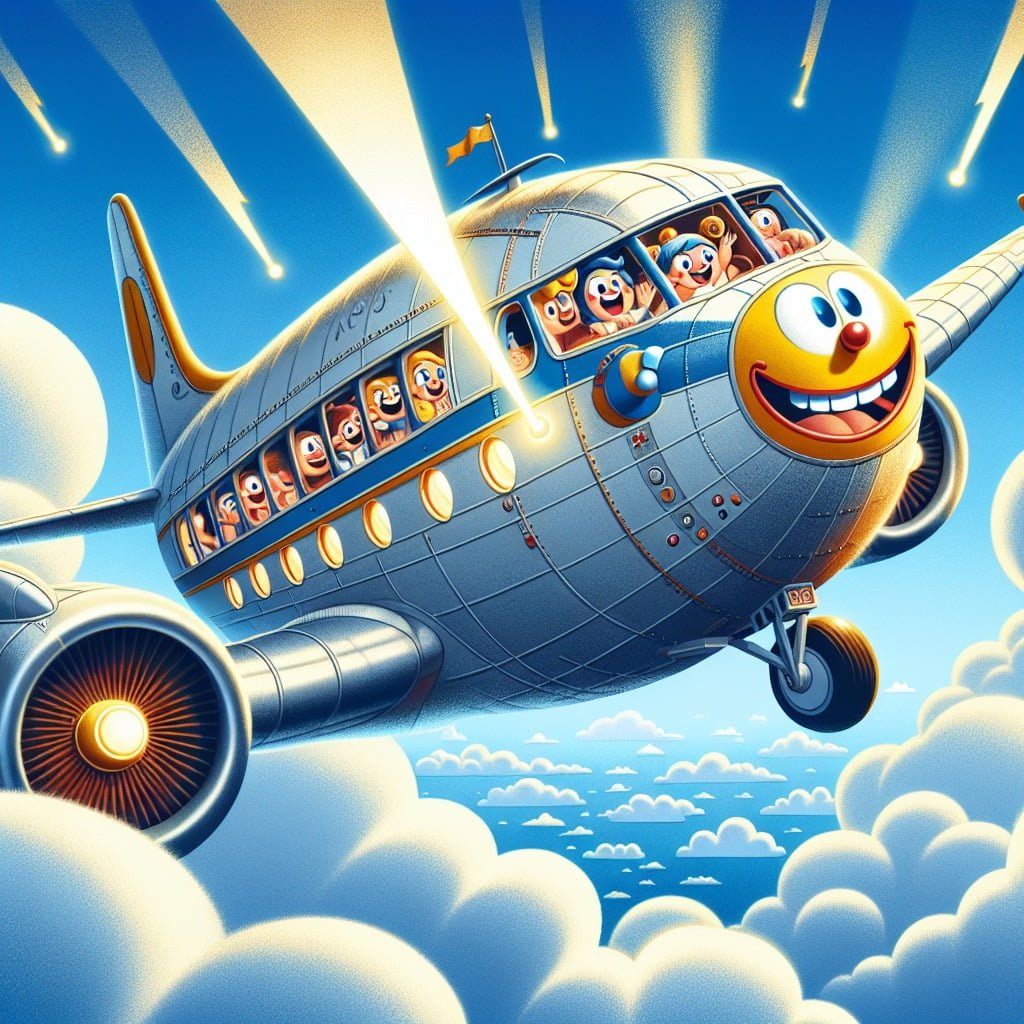
For younger kids: Planes are safe from lightning strikes because they have special protection!
For older kids: Aircraft are equipped with lightning protection systems, including metallic conductors and circuitry, to shield them from lightning strikes and ensure passenger safety during storms.
Detailed explanation:One fascinating fact about airplanes is that they have built-in lightning protection systems to ensure the safety of passengers and crew onboard. These systems are designed to dissipate the electrical charge from lightning strikes and prevent any damage to the aircraft.
One important component of the lightning protection system on airplanes is the static wicks, also known as static discharge wicks. These are small devices attached to the trailing edges of the wings, tail, and other parts of the aircraft. They work by providing a conductive path for the electrical charge to travel along, allowing it to safely disperse into the surrounding air.
Additionally, airplanes are made from materials that are good conductors of electricity, such as aluminum. This helps to further dissipate the electrical charge from lightning strikes throughout the aircraft’s structure.
In the event that an airplane is struck by lightning, the built-in protection systems help to minimize any potential damage. The lightning typically travels along the exterior of the aircraft, following the path of least resistance provided by the static wicks and the conductive materials. This helps to protect the internal systems and components of the airplane from being damaged.
Overall, the built-in lightning protection systems on airplanes are an essential safety feature that ensures the safety of everyone onboard. So the next time you look up in the sky and see a plane flying through a storm, remember that it is equipped with advanced technology to keep passengers and crew safe from the forces of nature.
Did You Know?
Pilots and co-pilots eat different meals on flights to reduce the risk of both becoming ill from food poisoning.
Summary of Airplane Facts For Kids
In the fascinating world of aviation, there are countless amazing things to learn about airplanes that make it an enriching and compelling topic for kids of all ages. From the incredible speed and power of planes to the rich history that dates back to the early pioneers of flight, there is no shortage of exciting knowledge waiting to be uncovered.
By delving into fun and intriguing facts about airplanes, children can not only expand their understanding of the world around them but also spark their curiosity about the mechanics and technology behind these extraordinary machines. Exploring the world of aviation can open up a whole new realm of possibilities and careers for kids to consider, from becoming a pilot to working in the aerospace industry.
Studying airplanes can inspire young minds to dream big and pursue their passions, while also instilling an appreciation for the vital role that aviation plays in our modern world. Whether it’s traveling the globe or delivering essential goods and services, airplanes are at the heart of so much of what makes our world connected and efficient.
Immersing themselves in the exciting world of aviation allows kids to embark on a thrilling adventure through the skies and expand their horizons in ways they never thought possible. So, why wait? Dive into the captivating world of airplanes and let your imagination soar to new heights!
Sources and additional information for Airplane Facts For Kids
WikipediaBritannicaNational Transportation Safety BoardFederal Aviation AdministrationNational Railroad Passenger Corporation (Amtrak)The Automobile Association (AA)BoeingCar and DriverAirbusTrainWebAuto ExpressAviation Week NetworkNational Air and Space MuseumDiscovery ChannelHowStuffWorksPopular MechanicsScience ChannelNational Railroad MuseumInternational Civil Aviation OrganizationAmerican Automobile Association (AAA)
